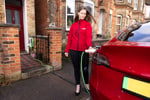Despite projected pricing structures suggesting customers would regard the company's next-generation drive system as 'affordable', work is now under way to further reduce the premium for the gadgetry that heralds dramatically improved operating economy.
'We've set a target of making the cost of stepping up to hybrid power no greater than the amount motorists are now prepared to pay for the switch from petrol to diesel,' said parallel hybrid vehicle project director Emmanuel Combes. 'The plan is for us to achieve that platform no later than 2004 and we are confident of success. This system of propulsion could well be set for manufacture in high volume.'
PSA is on course to achieve a minimum 25% reduction in CO2 emissions when its Citroen Xsara Dynalto, which uses electricity to boost a traditional petrol engine, is launched at the end of next year.
However, the potential for a dramatic improvement of 35% in both emissions and urban economy is on the horizon with Dynactive, a development featuring a more powerful and sophisticated version of the Dynalto's starter-generator layout.
A parallel hybrid, Dynactive adds an electric motor to the powertrain. In drive, it is able to propel the car without noise or fumes around town - but it also whizzes into action to boost the engine each time the driver needs acceleration. Controlled by sophisticated electronics, the system makes the engine feel more like a 1.6-litre when pulling away from rest or overtaking.
Combes revealed the next-step technology would only be offered for sale initially under the Citroen banner: 'Citroen has a high-technology image and is well suited for launching the Dynactive package. But as both our brands share platforms and components, it is not likely to be long before Dynactive is introduced on Peugeots,' he said.
Though it will be introduced on the mid-size Xsara, Dynactive will gradually be extended to smaller and larger models and is seen as having particularly strong potential when applied to commercial vehicles used for urban delivery work.
Still in the prototype stage, Dynactive technology gives the 1.4-litre petrol Xsara Executive estate a range of more than 600 miles and a CO2 emissions figure of 124g/km. But under purely electric power, it offers the ability to cover at least 12 miles of urban or city driving in zero-emissions mode.
Combes added: Dynactive is 100% certain to be built, but cost is the critical factor because we are determined that our hybrids will be good value for consumers as well as profitable for the company.'













Login to comment
Comments
No comments have been made yet.